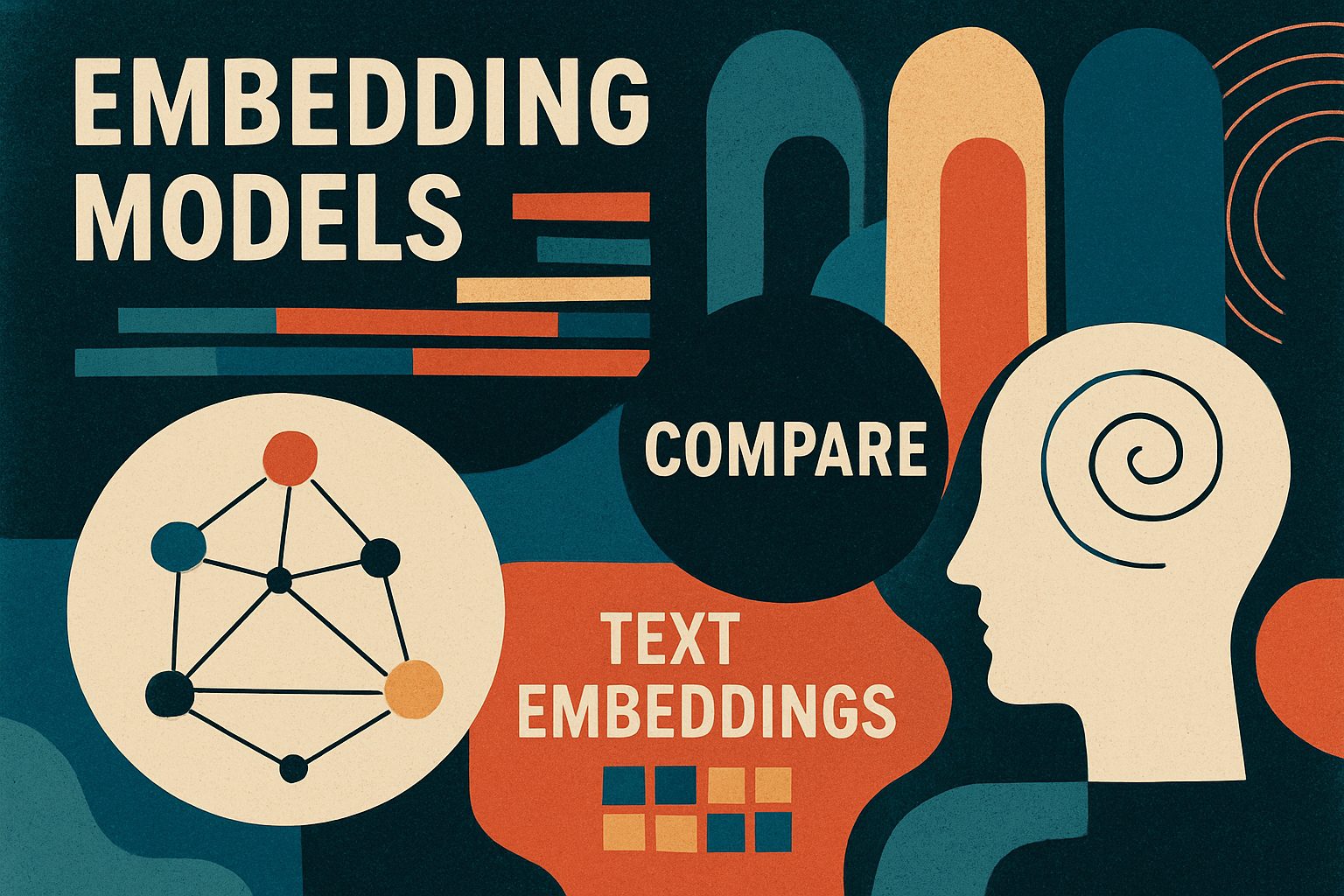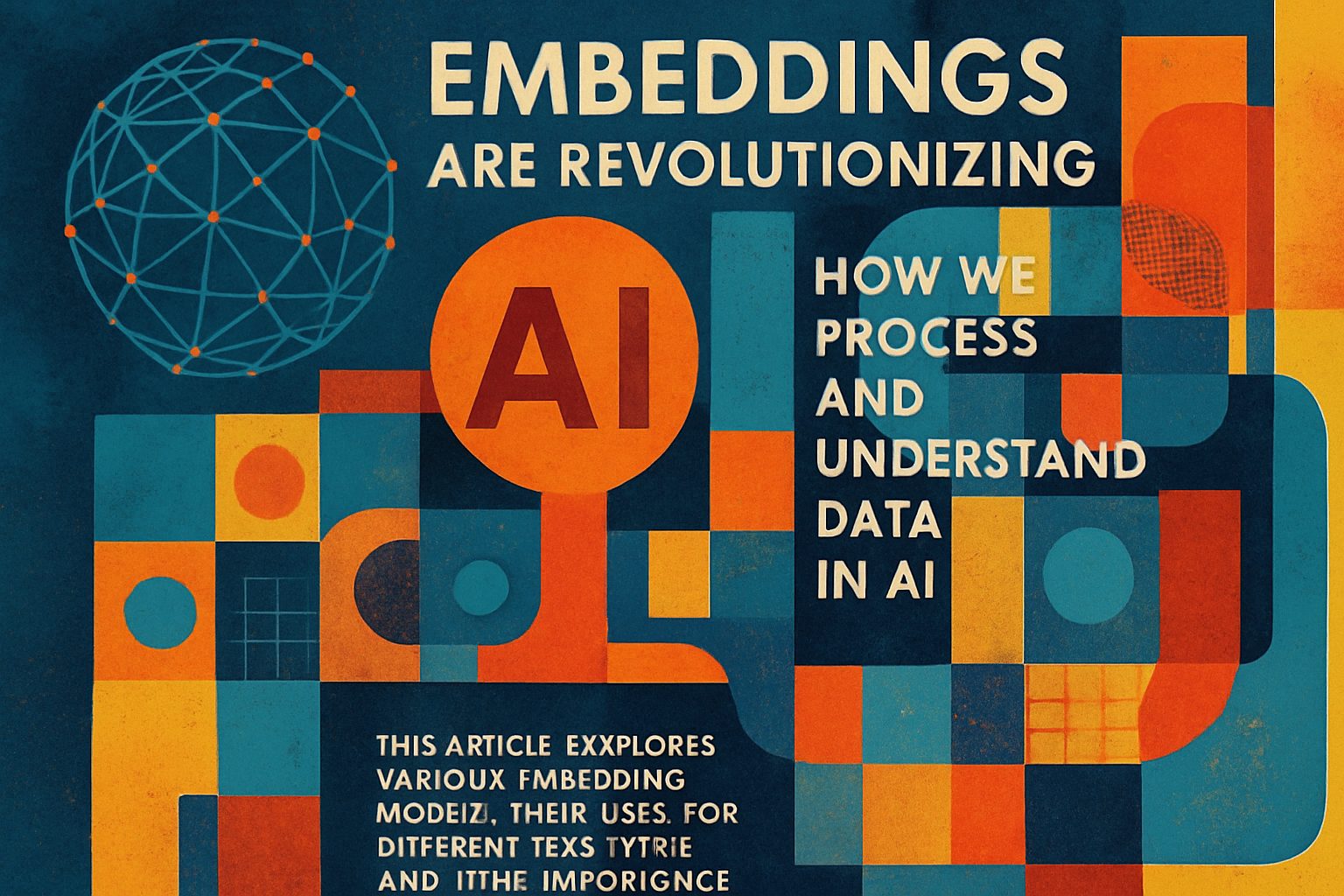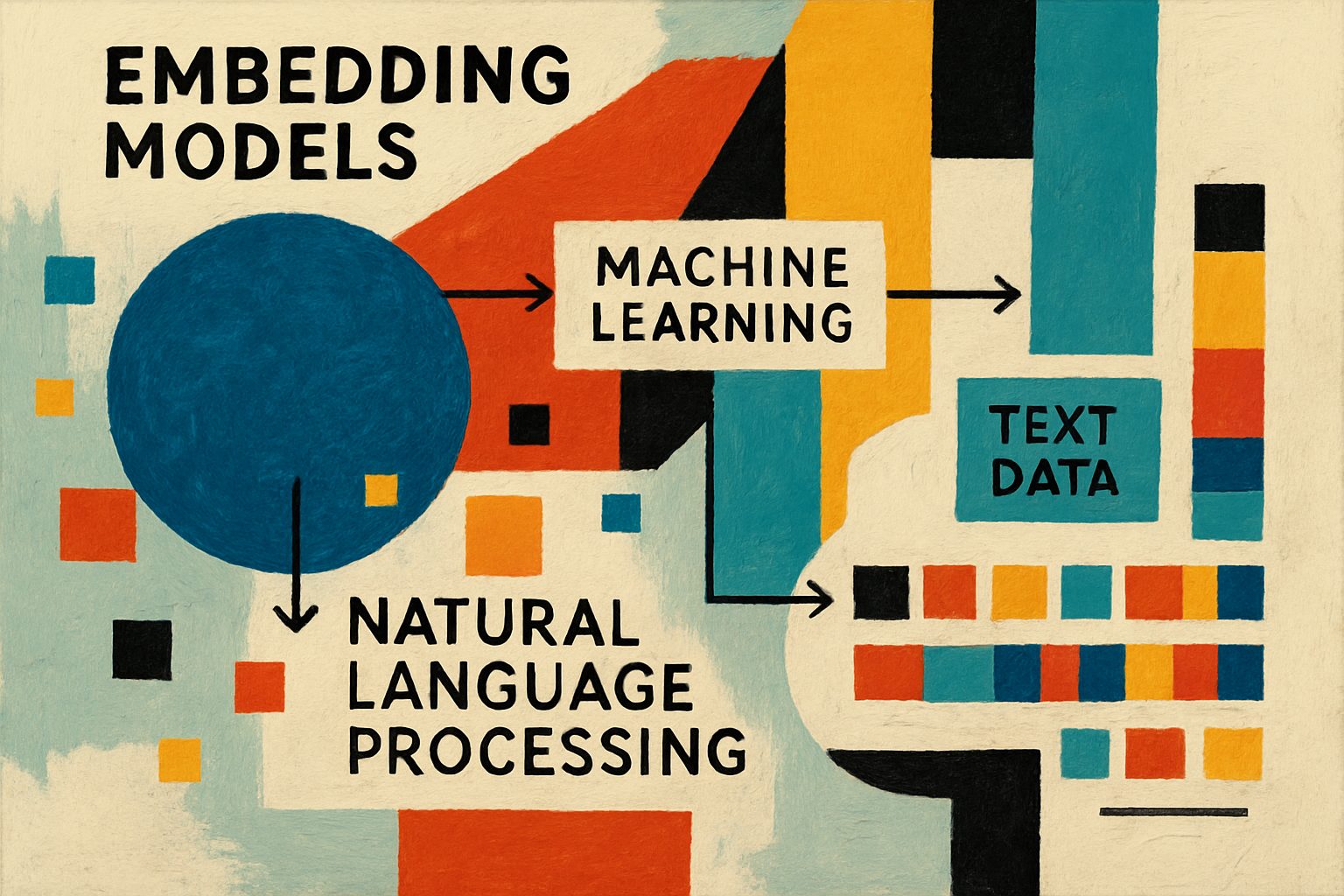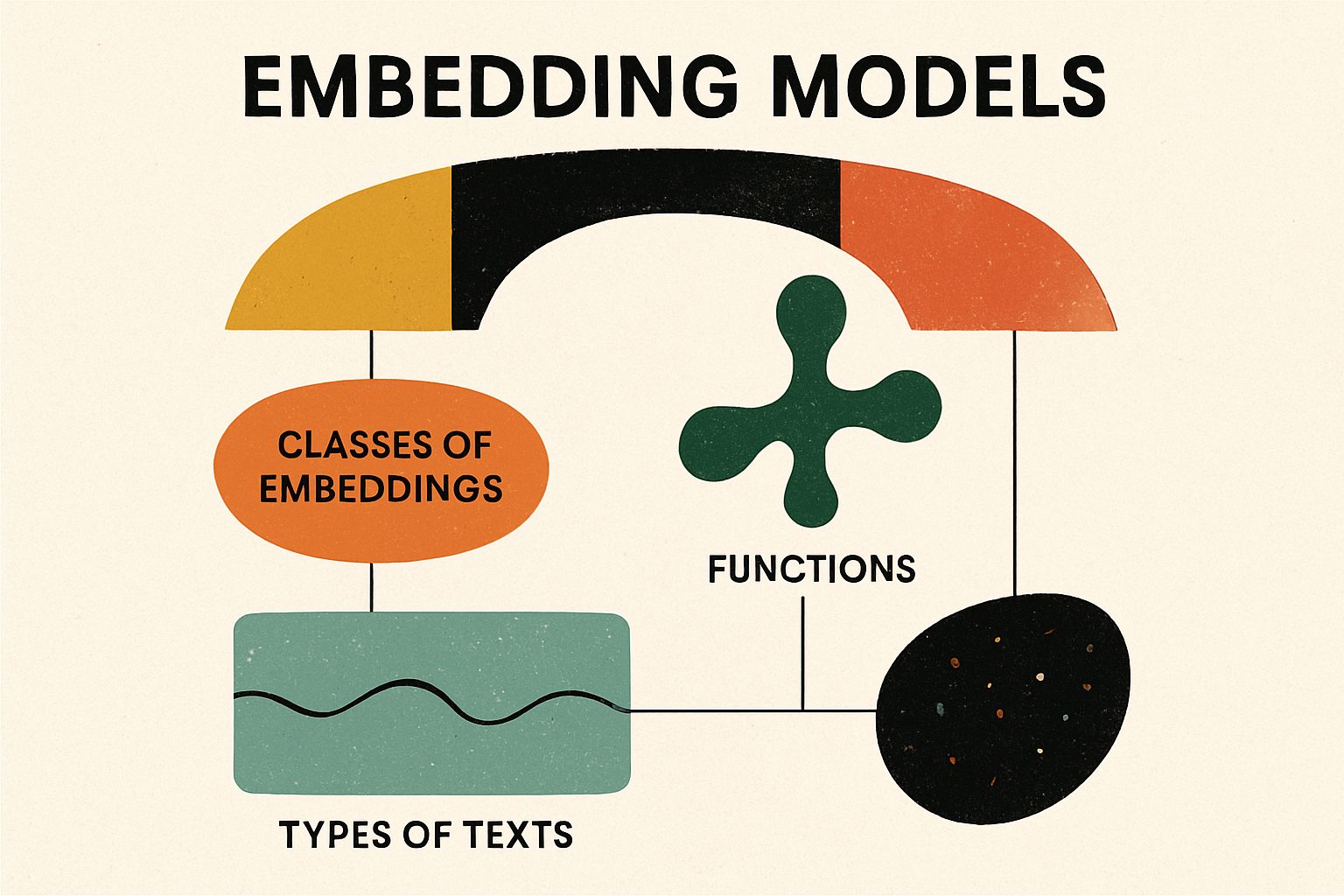
Unlocking the Power of Embedding Models: A Comprehensive Guide
Dive into the world of embedding models with our in-depth analysis that compares key architectures and their applications. Discover how different types of embeddings can enhance your natural language processing tasks and why selecting the right model is crucial for your success.
This comprehensive analysis explores Compare the various embedding models and explain their functions, the different classes of embeddings, and specifically which embeddings are suitable for different types of texts. Illustrate this relationship and clarify the reasons behind these distinctions., based on extensive research and multiple data sources.
Below is a comprehensive analysis of various embedding models from the literature. In recent years, embedding models have become a cornerstone technology in natural language processing (NLP) and beyond. They convert raw data—such as text and images—into dense, lower-dimensional representations that preserve semantic relationships. In this article, we compare and analyze five key embedding models, highlighting their architectures, training strategies, and use cases.

Thesis & Position
Below is a comprehensive analysis that categorizes different classes of embeddings along with examples and their corresponding applications. The thesis is that by classifying embeddings according to the type of input data and the intended application, we can better understand how to leverage each embedding type to enhance machine learning models and AI systems.
Thesis & Overview
Embeddings transform high-dimensional raw data (such as text, images, audio, or graph structures) into dense, lower-dimensional numerical representations. These representations preserve semantic or structural relationships, enabling efficient and effective processing by machine learning algorithms. The classification of embeddings can be based on:
- Data Type: The kind of input data (words, sentences, images, graphs, audio).
- Contextuality: Whether the embeddings are static (unchanging) or contextual (vary based on surrounding content).
- Task Specificity: Domain-specific or multimodal embeddings that combine data sources (e.g., text and images).
This classification framework helps researchers and practitioners choose the right embedding strategy based on the application, from language understanding to image recognition.
Categorized List of Embedding Classes
Below is a detailed categorized list of embedding classes with examples and applications:
1. Word Embeddings
- Description: Map individual words to dense vectors in such a way that semantically similar words are represented by similar vectors.
- Examples:
- Word2Vec: Uses CBOW (Continuous Bag-of-Words) or Skip-Gram methods. For instance, the analogy “king” — “man” + “woman” ≈ “queen” demonstrates semantic relationships [source](https://medium.com/@nay1228/embedding-models-a-comprehensive-guide-for-beg
Thesis
The choice of text embeddings significantly influences the performance of natural language processing (NLP) tasks. This guideline aims to identify and explain the relationship between different types of texts and their suitable embeddings, providing a structured approach for practitioners to select the most appropriate embedding models based on specific text characteristics and application requirements.
Understanding Text Embeddings
Text embeddings transform text into high-dimensional vector representations, preserving semantic relationships. These embeddings allow machine learning models to process text data more effectively by capturing contextual meanings. The primary types of text embeddings include:
- Word Embeddings: Individual words represented as vectors (e.g., Word2Vec, GloVe).
- Sentence Embeddings: Entire sentences or paragraphs transformed into vectors (e.g., Sentence-BERT, Universal Sentence Encoder).
- Document Embeddings: Larger text bodies represented as a single vector.
- Contextual Embeddings: Models that generate different embeddings for the same word based on context (e.g., BERT, GPT).
Table 1: Overview of Embedding Types
| Embedding Type | Description | Examples | Use Cases |
|---|---|---|---|
| Word Embeddings | Vectors for individual words | Word2Vec, GloVe | Text classification, semantic similarity |
| Sentence Embeddings | Vectors for full sentences or phrases | Sentence-BERT, Universal Sentence Encoder | Document similarity, sentiment analysis |
| Document Embeddings | Vectors for entire documents | Doc2Vec | Topic modeling, search optimization |
| Contextual Embeddings | Vectors that vary based on word context | BERT, ELMo, GPT | Question answering, chatbots, context-aware tasks |
Analysis of Text Types and Embedding Suitability
1. Short Texts (e.g., Tweets, Chat Messages)
- Suitable Embeddings: Word Embeddings and Contextual Embeddings.
- Rationale: Short texts often lack context, making it essential for models to capture semantic meaning efficiently. Word embeddings can provide basic representations, while contextual embeddings like BERT can help in understanding multiple meanings based on surrounding words.
2. Medium-Length Texts (e.g., News Articles, Blogs)
- Suitable Embeddings: Sentence Embeddings and Document Embeddings.
- Rationale: Medium-length texts contain sufficient context for sentence embeddings to capture the overall meaning. Sentence-BERT is particularly effective here as it enhances semantic similarity understanding, aiding in tasks like summarization and classification.
3. Long Texts (e.g., Research Papers, Books)
- Suitable Embeddings: Document Embeddings and Contextual Embeddings.
- Rationale: Long texts require embeddings that can encapsulate extensive information. Document embeddings can represent the entire text body succinctly, while contextual embeddings can help in understanding the nuances across sections.
4. Specialized Texts (e.g., Legal Documents, Scientific Articles)
- Suitable Embeddings: Domain-Specific Embeddings (e.g., LegalBERT) or fine-tuned versions of general-purpose embeddings.
- Rationale: Specialized texts often contain jargon and specific structures. Fine-tuning embeddings on domain-specific datasets helps in enhancing accuracy for tasks like information retrieval and classification.
5. Multilingual Texts
- Suitable Embeddings: Multilingual Embeddings (e.g., mBERT, XLM-R).
- Rationale: Multilingual texts require embeddings capable of understanding various languages and their nuances. Models trained on multiple languages can effectively capture semantic meaning across different linguistic contexts.
Comparison of Embedding Models
When selecting an embedding model, consider the following factors:
Table 2: Comparison of Embedding Models
| Model | Type | Context Sensitivity | Use Cases | Advantages |
|---|---|---|---|---|
| Word2Vec | Word Embedding | No | Sentiment analysis, text classification | Fast training, effective for simple tasks |
| GloVe | Word Embedding | No | Semantic similarity, clustering | Captures global context |
| BERT | Contextual Embedding | Yes | Chatbots, Q&A systems | High context sensitivity, versatile |
| Sentence-BERT | Sentence Embedding | Yes | Document similarity, paraphrasing | Optimized for sentence-level tasks |
| Universal Sentence Encoder | Sentence Embedding | Yes | Semantic search, classification | Quick inference |
Vyftec – Embedding Models Analysis
Unlock the potential of your data with Vyftec’s expertise in AI and machine learning, focusing on embedding models tailored for diverse text types. Experience Swiss quality in research and analysis that drives impactful insights—let’s transform your projects together!
📧 damian@vyftec.com | 💬 WhatsApp


